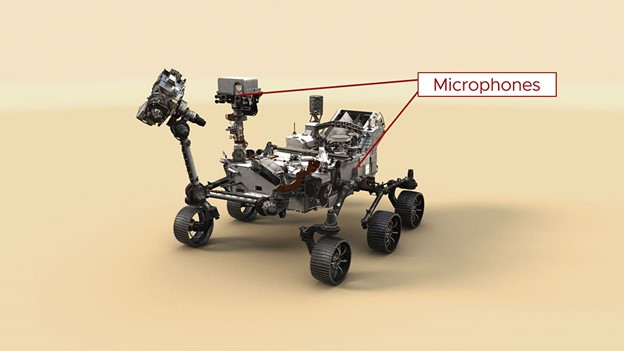
Two microphones on board the NASA Perseverance rover have been listening closely to the surface of Mars since the rover landed in February 2021. The martian atmosphere has a pressure that is less than 1% of that on Earth and a very different, CO2-rich, composition, so scientists have hypothesized that sound travels differently on Mars. However, until now, no actual data as to the nature of sound on Mars had ever been collected. A study led by Sylvestre Maurice of the University of Toulouse in France used data from Perseverance’s microphones to study the acoustics of sounds in the range of audible and higher frequencies (20 Hz – 50 kHz) on Mars. The microphones picked up sounds that were made by the rover itself and its companion Marscopter, Ingenuity. The data from the sounds made on Mars by these spacecraft could then be compared to the data from the sounds they made when they were on Earth.
Overall, the study revealed that the thin, CO2-rich atmosphere of Mars causes sound to travel at a lower speed (537 mph for low-pitched sounds and 559 mph for high-pitched sounds) than it does on Earth (767 mph independent of pitch). The thin atmosphere also results in a decrease in the distance that sound can propagate through the air, particularly for high-pitched sounds, making the martian surface eerily quiet. However, martian atmospheric pressure changes with the seasons, and it is expected that Perseverance’s neighborhood may become noisier in the coming months as the northern hemisphere of Mars moves into winter. This study has also shown that listening to the sounds of the rover can help engineers monitor the health of onboard instruments. As such, Perseverance will keep listening to itself, and to the sounds of Mars, to help scientists understand the dynamics of the martian atmosphere with the changing seasons and to keep a closer ear on how the rover is doing. READ MORE